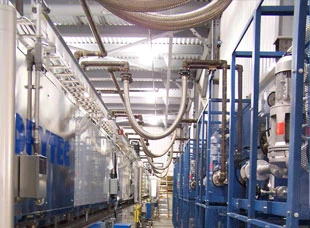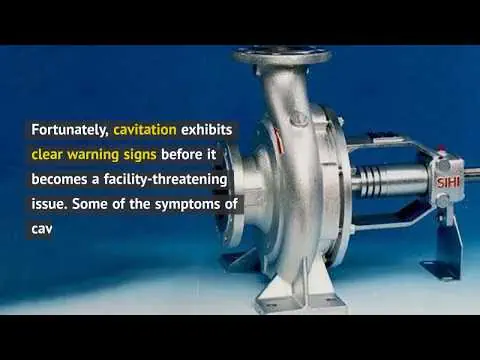Cavitation severely increases wear and tear in your hydraulic pumps and control valves, resulting in reduced machine service longevity and poor flow efficiency. Therefore, avoiding the costly effects of pump cavitation in your thermal fluid or hot oil heating systems relies heavily on knowing how to diagnose and prevent it.
What Is Cavitation?
Cavitation occurs when air, steam, or thermal fluid vapors become entrained in the fluid. The result is pump surging and this should be corrected as soon as possible.
Water-based processes are one of the most common causes of cavitation. Liquid water and water vapor contain the same number of molecules. However, water vapor molecules have a higher energy level, which increases the amount of volume needed to safely contain them. If boiling bubbles burst due to insufficient pressure, they create an energy shock wave, which causes pump surging or cavitation.
How to Diagnose and Eliminate Cavitation in Process Heating Systems
Fortunately, cavitation exhibits clear warning signs before it becomes a facility-threatening issue. Some of the symptoms of cavitation include
- Decreased flow or pressure: When a pump produces lower flow volume or pressures than expected, it may be a result of cavities forming in internal components.
- Noise: Cavitation may cause crackling or popping sounds in your machinery. Impeller housings experiencing cavitation may sound like there are loose ball bearings rolling around in them
- Unexpected vibrations: Most pumps and equipment experience some degree of vibration during operation; however, violent or unexpected vibrations may be the result of cavitation.
- Seal or bearing failure: If you have to replace failed or leaking seals sooner than expected or with greater frequency, then cavitation is a likely cause.
Types of Cavitation
Cavitation can occur in both thermal fluid and hot oil systems, and each type has its unique symptoms and causes. A few common types of cavitation include:
- Vaporization: Also known as classic cavitation, vaporization occurs when velocity increases and pressure decreases, which causes liquid to boil and vaporize in the pump
- Air aspiration: This type of cavitation results from various issues pulling air into the pump or piping
- Turbulence: Turbulent flows can happen when design elements like sharp elbows, inadequate piping/filters/strainers, or other flow restrictions within the system create vortexes in pump suction
How to Prevent or Fix Cavitation
There are many ways to fix cavitation. We outline these below, along with some general guidelines on how to prevent cavitation in the first place:
- Right pump and proper operation: Use the best pump for your specific application and run it at its best efficiency point (BEP).
- Lower operating temperatures: Decrease your operating temperatures as your equipment’s altitude increases to prevent boiling.
- Proper NPSH levels: Maintain proper net positive suction head (NPSH) levels by adhering to the following formula: NPSHa > NPSHr + 3 ft (or slightly more for a safety margin), where NPSHa = absolute NPSH and NPSHr = required NPSH.
As pump components wear over time or incur damages from cavitation, adhering to these guidelines may become more difficult. Under these circumstances, it may be best to consider replacing the pumps and related parts within your system.
What Can Thermal Fluid Systems Do for You?
Thermal Fluid Systems’ experienced personnel can help you diagnose cavitation in your process heating systems. We’re qualified to offer solutions that prevent and fix cavitation at its source. We build on more than 40 years of experience and can recommend and install the correct pumps, valves and accessories for your operation. Our goal is to provide the best-quality service and replacement parts for your hot oil heating system.
Contact us to learn more about how Thermal Fluid Systems can help you prevent or fix pump cavitation in your facility.


